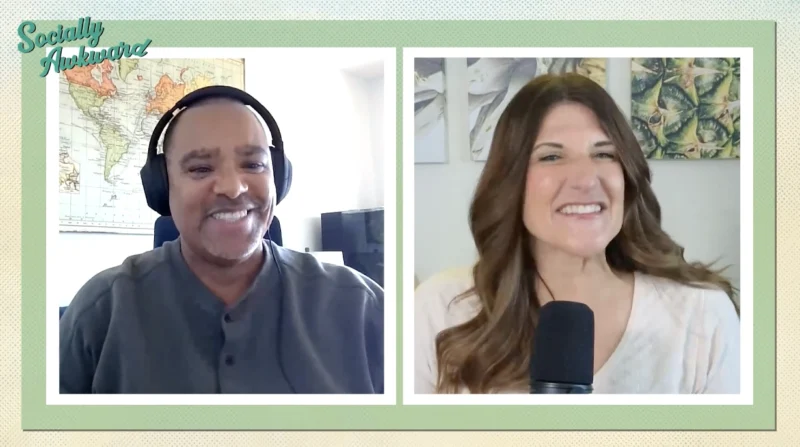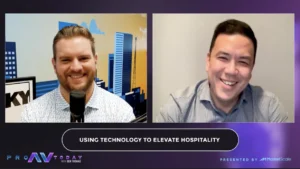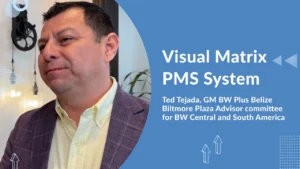Office Hours with Michael McCall: A New Era of Consumer Behavior
Welcome to Office Hours, where current issues facing hospitality professionals will be discussed and potential solutions pursued. My name is Michael McCall and I am the NAMA Endowed Professor of Hospitality Business at Michigan State University.
My primary areas of expertise lie in customer loyalty and reward programs, but I am particularly interested in the wider consumer behavior landscape. Over the next few months I will be discussing issues that we are thinking about in the ever-expanding field of hospitality; these might include topics related to guest security, loyalty and revenue management and other areas related to consumer lifetime value. Notably, I will be commenting on those issues that are keeping hospitality executives up at night.
In our ongoing series of discussions, this column will examine another important driver influencing how consumers think and behave. As discussed in an earlier column, the real value we seek rests in the relationship established between the firm and the customer. That process begins with a better understanding of the customer as well as the kind of relationship both parties desire. In this column, I want to touch upon what firms might do to enhance the success of these consumer-oriented emphases regardless of the label given them.
How Much is Too Much?
As a basic consumer principle, “consumers are limited capacity information processors.”
Why is this important to consider?
First and foremost, the key to acquiring and keeping their attention depends in part on a customer’s willingness to communicate. Put simply, we pay attention to those things that are more important to us. If a future trip is being considered or planned, attention to airline fares and airline brands become more important.
If a hotel is being selected, firms hope and expect that reward program membership might tip the balance in their favor. This does not suggest that consumers are unaware or incapable of processing large amounts of information; rather it speaks to a need for hospitality firms to better understand who their customers are and what needs they might be seeking information about.
What is both exciting and important to understand about this consumer limitation is that they can and will process that information that is most easily available to them. While marketers often refer to this idea as attempting to break through the clutter, a better approach might be to find ways to understand what information consumers are seeking.
Consumer behavior specialists refer to this idea as low and high involvement consideration, or, as things become more important to us we process the information deeper and more thoroughly. Similarly, a trip to a casino or an amusement park is often driven by information that communicates fun or excitement.
Attraction in the Era of Inundation
A famous psychologist once wrote a paper about the “experience” of living in cities that may offer insight into consumers’ limited information capabilities. In a brief treatise, the author goes on to describe the multitude of attempts to capture his attention as he traveled about New York City. His conclusion was that there are simply too many things competing for our attention for us to take in everything.
The author of this paper was none other than Stanley Milgram and the paper appeared in Science in 1970. To think that this information overload has somehow abated in the last 49 years would be an error. The general argument today is that the amount of available information for even he simplest decisions is often overwhelming.
What becomes the prescription or remedy to this dilemma?
The answer goes back to several of the key issues we have spoken about in earlier columns: know your customers.
Who are these consumer groups that might seek to establish a relationship with your firm and to what extent do you understand those critical pieces of the puzzle to tip their decision in your favor? The exciting part of this challenge is that there may be multiple segments or groups of consumers each with different expectations and sets of wants or needs.
Know the Customer, Know Success
In 2019, this translates into the simple axiom that one size does NOT fit all. Whether it be in hospitality healthcare, sports hospitality or travel and tourism, today’s service providers are increasingly expected to differentiate among those consumer segments on the basis of their needs. The firms that provide the kind of information that consumers desire will likely benefit substantially. Of course, the obvious caveat is the firm itself must have a foundational understanding of the business that they are in and who their customers present and future might be.
To sum, customers are going to become more engaged when firms have a better understanding of precisely what customer segments are seeking, and then provide the information in a format that can be visual or auditory.
The well-known Dr. Milgram was absolutely correct in stating that we cannot possibly take in and comprehend everything that impinges upon our senses and these effects extend well beyond the urban environment. The key in this age of information explosion would seem to be in knowing what kind of information can help them to decide. While this brief discussion emphasized the need to understand consumer segments, future columns will consider several approaches for differentiating these complex multifaceted new consumers. As always, I welcome your thoughts, comments and suggestions for future columns.
Make sure to follow along with Office Hours, a bi-weekly column by Michael McCall.
For the latest news, videos, and podcasts in the Hospitality Industry, be sure to subscribe to our industry publication.
Follow us on social media for the latest updates in B2B!
Twitter – @HospitalityMKSL
Facebook – facebook.com/marketscale
LinkedIn – linkedin.com/company/marketscale








